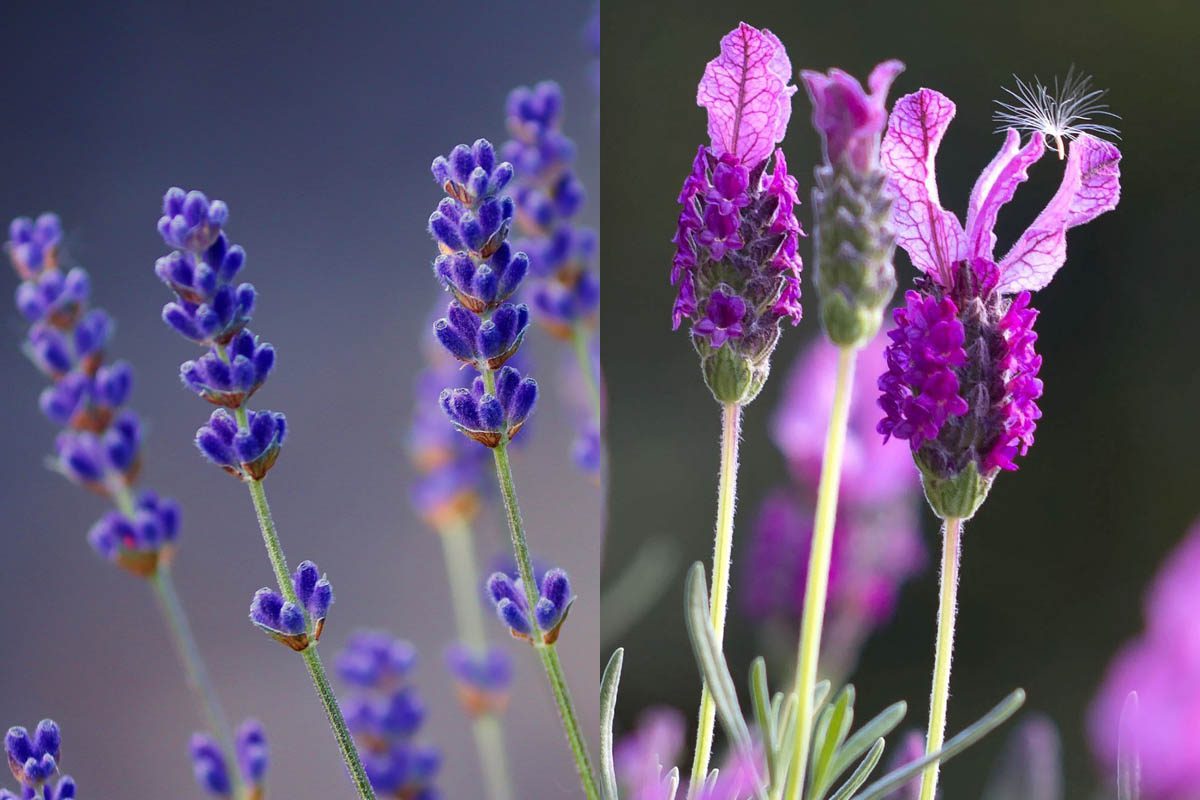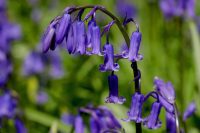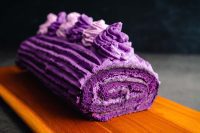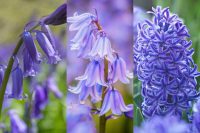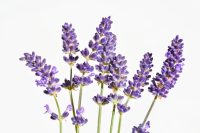What is the difference between English and French lavender? Ι English lavender Ι French lavender Ι Which lavender to choose Ι Conclusion
English and French lavender are two of the most popular and widely cultivated species of Lavandula. These scented plants are commonly grown in cottage gardens for their vibrant colours and fragrance. Despite their shared genus, English and French lavender have several different characteristics.
English lavender is somewhat misleading as it originated from the Mediterranean region. The name ‘English lavender‘ is thought to be due to its widespread cultivation and popularity in English gardens and its use as a perfume, particularly among royalty and nobility.
Related: What is the difference between English and French lavender?
What is the difference between English and French lavender?
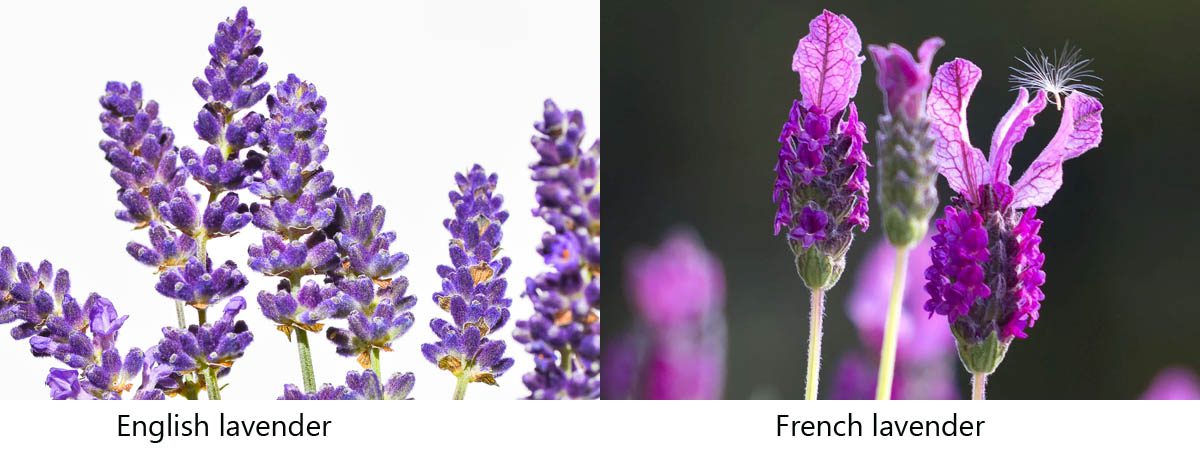
English lavender |
French lavender |
|
| Scientific name | Lavandula angustifolia | Lavandula stoechas |
| Common names | English lavender, common lavender, true lavender, garden lavender | French lavender, topped lavender, Fringed lavender, Spanish lavender |
| Native region | Mediterranean region, primarily in the mountainous zones of Spain, France, and Italy |
Mediterranean region, predominantly found in Spain, Portugal, France, Italy, Greece, and North Africa |
| Flower shape | Spike-shaped with small, tubular flowers |
Pinecone-shaped with larger, showier flowers and bracts |
| Flower colour | Violet (blue-purple) and white | Purple, pink and white |
| Flowering time | Early to late summer | Late spring to early summer |
| Height | 30 – 60 cm | 30 – 100 cm |
| Leaf colour | Silvery-green, narrow leaves | Green to grey-green |
| Scent | Strong, sweet and floral – classic lavender scent | French lavender has a higher camphor level than English which gives it a stronger ‘piney’ scent |
| Essential oil content | High, used extensively in perfumery and aromatherapy |
Lower, less commonly used for oil production |
| Cold hardiness | USDA Zones 5-9 | USDA Zones 8-10 (less cold-hardy) |
| Drought tolerance | Moderate to high | High |
| Common uses | Ornamental gardens, hedges | Ornamental gardens, container plants, dried flower arrangements |
| Culinary uses | Used in a wide range of culinary applications including baking, teas, syrups, liqueurs |
Generally not used as a culinary herb |
| Medicinal uses | Traditional medicinal uses for relaxation, sleep aid, and soothing minor burns and skin irritations | Less commonly used for medicinal purposes, but may share some properties with English lavender |
| Growth habit | Compact, dense and bushy | Looser and more open growth |
| Companion planting | Pairs well with roses, salvia, and other sun-loving perennials | Pairs well with drought-tolerant, Mediterranean plants like rosemary, sage, and thyme |
English lavender
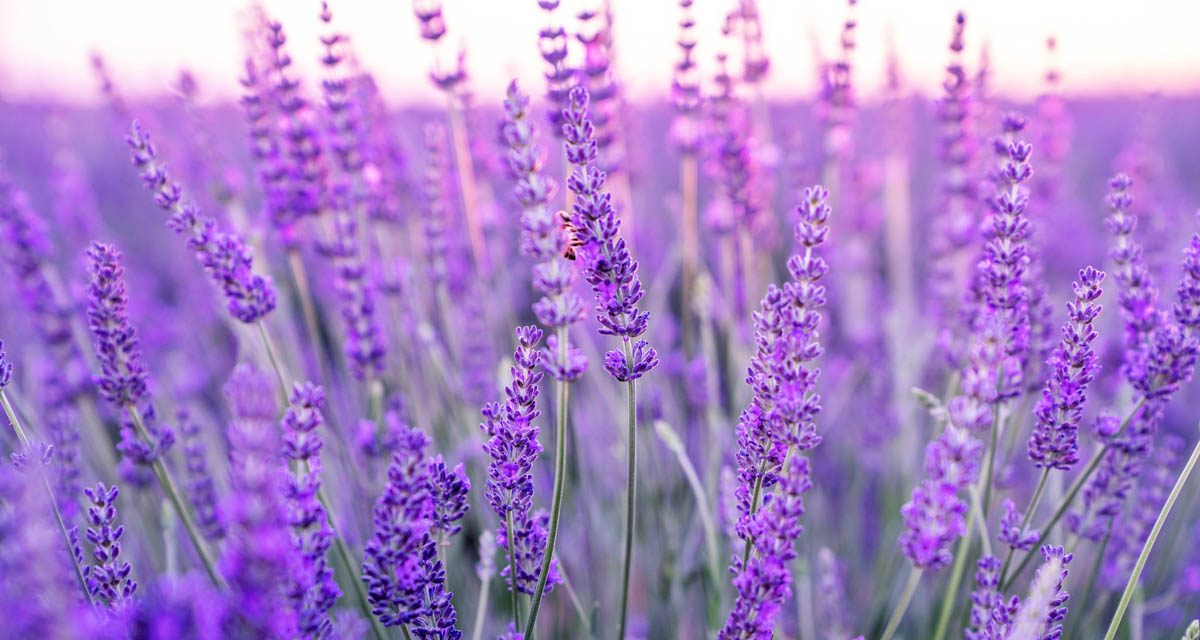
Also known as true or common lavender, English lavender (Lavandula angustifolia) has been cultivated in the British Isles since the Roman era. The Romans recognised the benefits of lavender for its antiseptic, insect repellent, cosmetic, and culinary properties. The aromatic fragrance of English lavender was used by the Romans in bathwater, hence the name ‘lavender‘ which is derived from the Latin word ‘lavare‘, which means ‘to wash‘. Queen Elizabeth
To this day, English lavender is widely cultivated for its essential oils and fragrant flowers and is used extensively in aromatherapy, massage oils, candles, perfumes, soaps and as a linen and room spray. The fragrant flowers are used in the culinary world and impart a unique floral taste. English lavender can be used to create lavender-infused honey, jams, syrups, buttercream, teas and baking.
- Flowers: English lavender flowers are typically deep purple, but can also be pale lilac or white. They are arranged in dense, terminal spikes that form cylindrical or conical flower heads. The flower spikes are held on erect, leafless stems that rise above the foliage.
- Fragrance: English lavender flowers have a delicate, floral scent with sweet overtones and a hint of rosemary. The fragrance is described as relaxing and soothing and the buds are used in aromatherapy, perfumes, candles, food and beverages and beauty products.
- Leaves: The leaves of English lavender are lanceolate, sometimes with a slightly broader base. The bright green colour of the leaves may have a silvery sheen due to the presence of fine hairs, which also give the leaves a slightly fuzzy texture (known as pubescent linear leaves). These leaves are oppositely arranged on the stems, growing in pairs directly opposite one another and attached directly to the stem without a petiole (leaf stalk). The edges of the leaves are smooth, without teeth or serrations, and the leaves also possess a pleasant, sweet fragrance.
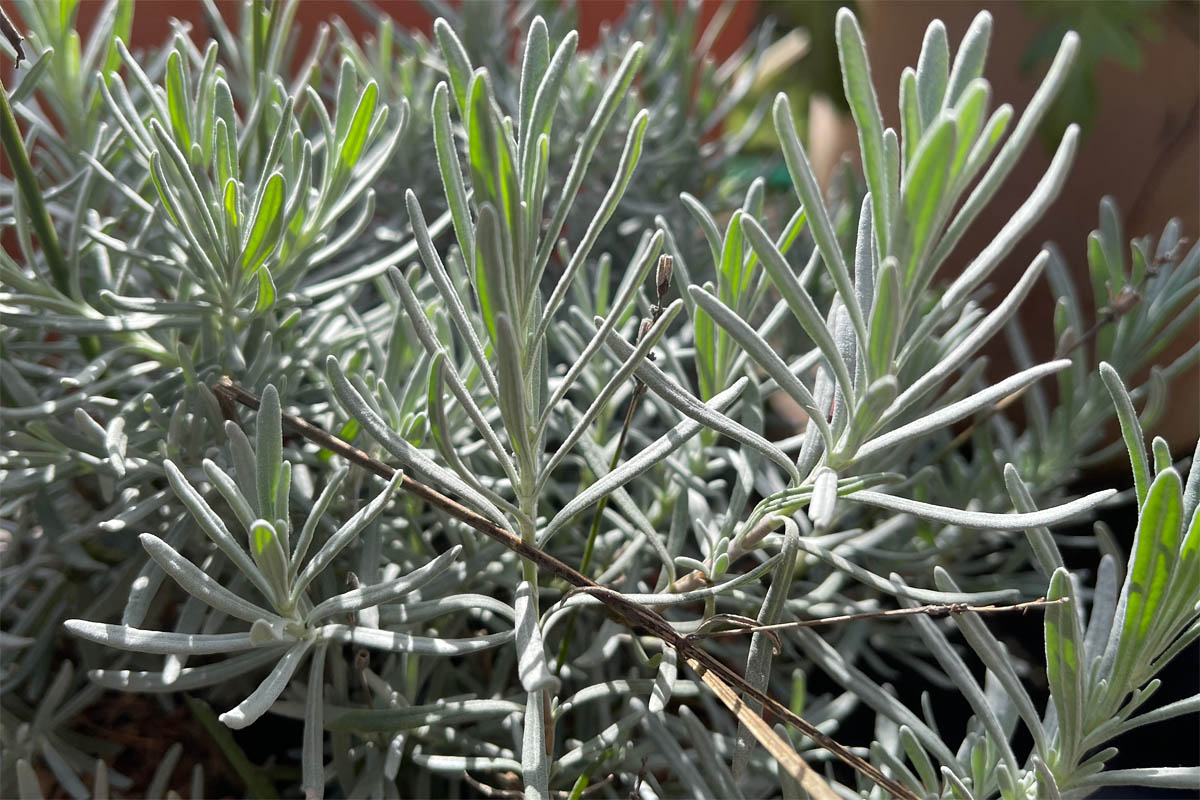
- Uses: English lavender remains popular among gardeners. It is drought-tolerant, fragrant, and attractive to pollinators. It fits well in cottage, herb and Meditterean-style gardens. As an avid gardener and lover of lavender, English lavender is my personal preference. I love the simplicity and the fragrance of English lavender flowers and grow them in my herb garden.
French lavender
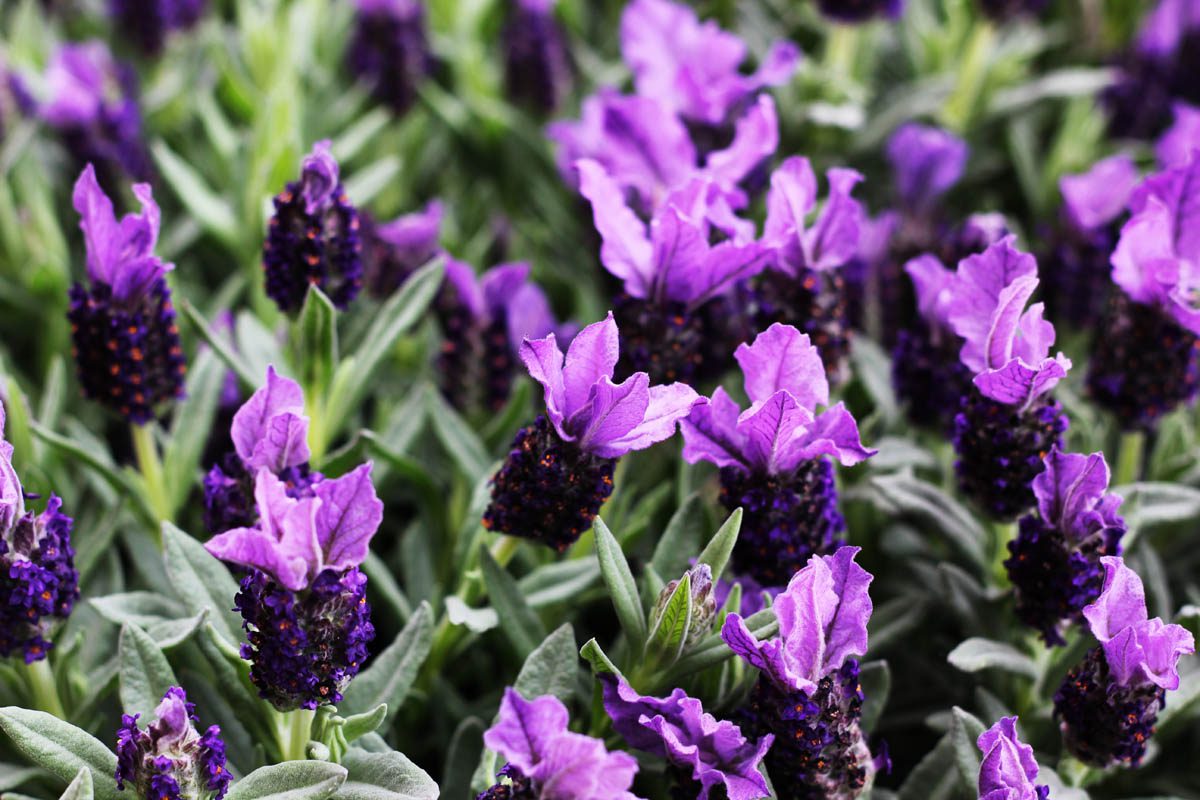
Also known as ‘toothed lavender and Spanish lavender‘, French lavender (Lavandula stoechas) is native to Spain, Portugal, France, Italy, Greece, and North Africa and is grown for its decorative ruffled purple flowers. While French lavender also has an aromatic scent, it is less sweet than that of English lavender with camphorous notes.
- Flowers: The flowers are made up of multiple, cone-shaped flowerheads (known as a spike) with showy bracts (modified leaves) at the tip. Each flower consists of a calyx (bud), corolla (petals), stamen and pistil. The calyx is the outermost part which consists of small, leaf-like structures to protect the developing flower. The corolla is made up of petals, that are typically purple but can also be found in pink and white.
- Fragrance: French lavender flowers have a slightly different aroma to English lavender. The scent is stronger and more pungent, with a sweet and floral scent that is accompanied by more pronounced herbaceous and woody notes. Some people describe the scent as being sharper and more camphorous and earthy than English lavender.
- Leaves: The leaves are slightly narrower than those of English lavender, elongated, with a silvery-green colouration and covered peltate trichomes which produce and store essential oils. Fine, soft hairs, give the leaves a velvety texture (pubescent linear leaves). These hairs help protect the plant from water loss and intense sunlight, as well as give the plant its characteristic greyish-green, silvery appearance. The hairs found on lavender leaves are non-glandular and do not produce or store any essential oils.
- Uses: French lavender is a popular ornamental flower in the garden, adding long-lasting colour and its characteristic odour. Unlike English lavender, French lavender is rarely used commercially for its scent.
Which lavender to choose
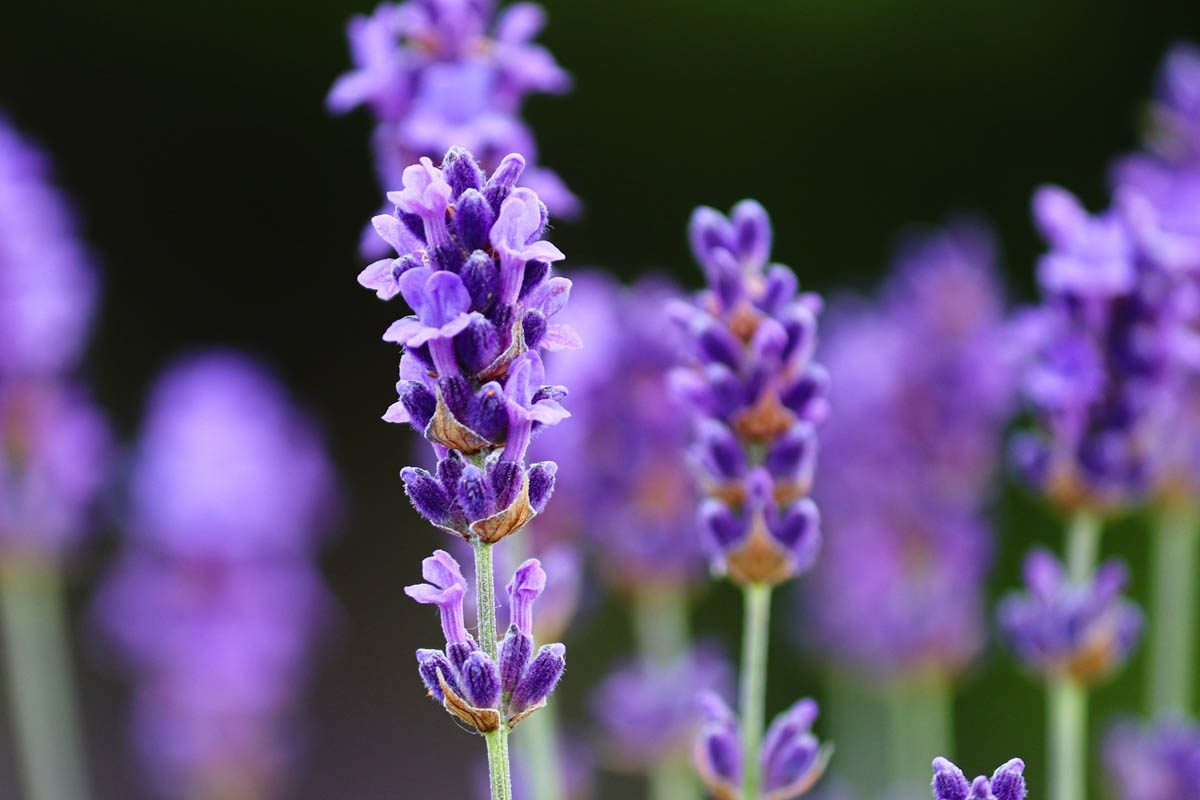
The choice between English and French lavender is personal. In my opinion as a lover of lavender, the French is far showier and makes a great choice for a decorative garden bed or in terracotta pots to add some colour to decks and patios.
From a price point of view, lavender plants are relatively inexpensive, and both types cost around the same amount. I love the simplicity and the fragrance of English lavender but generally grow both types in pots on the deck as well as in the ground near my vegetable patch to attract pollinators and add some colour. Interestingly, I’ve never had luck growing English lavender from seed, but the French lavender I currently have is self-sowing everywhere, not that I mind free lavender plants.
Both lavender varieties make great hedges but can become woody, so will need a hard prune once a year to keep them in shape.
Lavender flowers make great cut flowers and their beautiful floral scent will fill the room.
Conclusion
- English and French lavender are both popular plants grown for their attractive flowers and aroma.
- French lavender has showy flowers, while English lavender has less showy flowers, but a sweeter and more appealing aroma.
- English lavender is used for its scent in beauty products, aromatherapy and in the food industry.
- Both English and French lavender are great additions to the garden or deck and will reward you with months of beautiful flowers.
Julia is a writer and landscape consultant from Wollongong with a love of horticulture. She had been an avid gardener for over 30 years, collects rare variegated plants and is a home orchardist. Julia is passionate about learning and sharing her knowledge of plant propagation and plant toxicology. Whether it’s giving advice on landscape projects or sharing tips on growing, Julia enjoys helping people make their gardens flourish.
